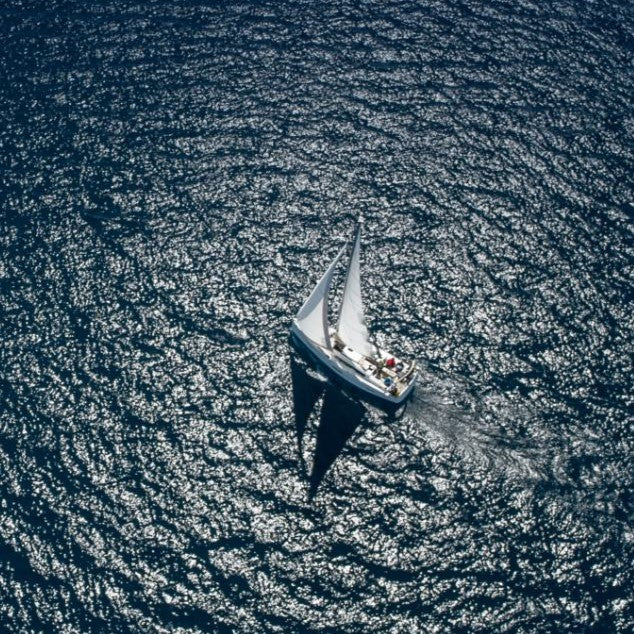A recent incident near Bognor Regis shows just how quickly things can go wrong at sea. A sailor fell overboard while their yacht was (presumably) motoring slowly under autopilot in calm, windless conditions. Nobody noticed until the vessel eventually ran aground on the beach. Thankfully, no one in the water was hurt, and the boat stopped before heading out to sea, but the outcome could have been far worse.
Without wind, most yachts will be under engine power and autopilot, motoring silently and steadily away from a person in the water. If the boat doesn’t stop or turn back, the sailor may be left drifting, unnoticed and without a way to raise the alarm.
It’s clear that wearing a lifejacket and carrying an emergency locator device would have significantly improved the chances of a quick rescue. However, lifejackets are often taken off when moving in and out of the cabin, especially on warm summer days in calm conditions. The small OLAS tag can be worn on the wrist at all times, ensuring you remain connected to the vessel even if you’re not wearing a lifejacket.
This is exactly the kind of situation the OLAS Guardian is designed to prevent.
The moment a crew member wearing an OLAS transmitter falls overboard, the Guardian cuts the engine automatically.
It activates an onboard alarm to alert any remaining crew.
It can also send an SMS with GPS coordinates via Solo Mode - alerting emergency contacts instantly.
Stopping the vessel immediately gives a sailor the chance to swim back onboard and removes the risk of an unmanned yacht continuing into danger, whether that’s a crowded beach or the open ocean.
The OLAS Guardian offers simple, wireless protection for sailors, making sure that a single slip doesn’t turn into a tragedy.
https://www.theargus.co.uk/news/25392058.person-rescued-sea-boat-came-aground-near-bognor/

